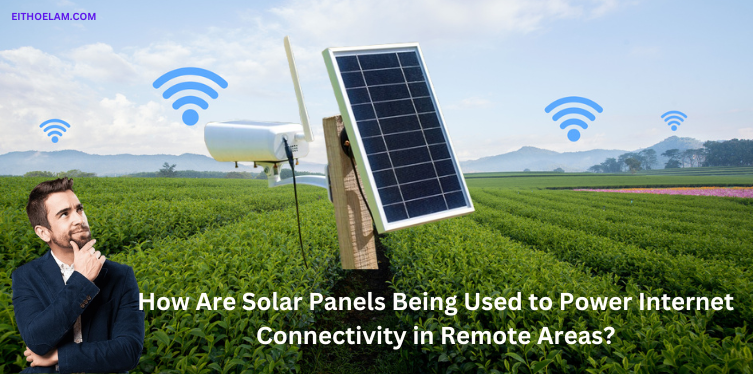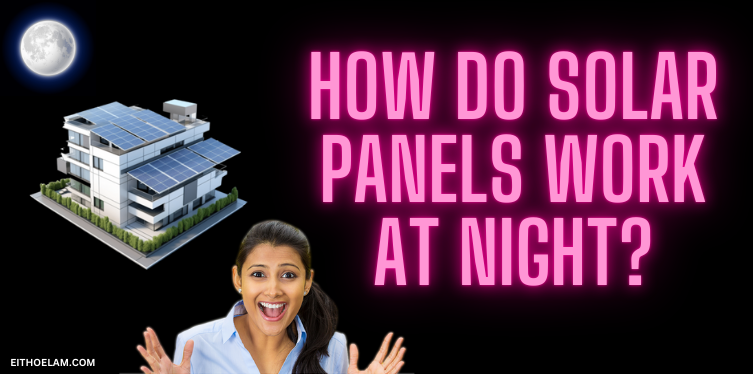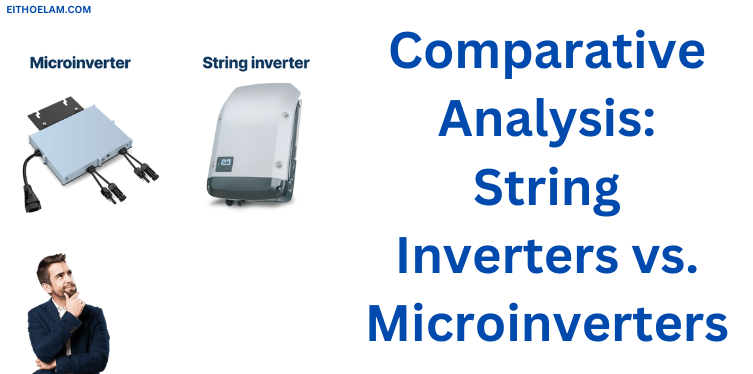Introduction
It is one of the necessities of education, communication, healthcare, and economic growth in today’s world. Yet millions are denied reliable internet access in remote and rural areas worldwide for various reasons: these regions are plagued by unreliable electricity and geographical isolation, among other things, hence difficult to bring conventional internet services to such areas. However, through renewable energy technologies developed today, the solar panel is something new and promising as a source of power for internet connectivity in places where traditional electricity can’t reach. This article would discuss how solar panels are used to conquer digital divide through access in remote communities worldwide
Understanding Solar Energy and How It Powers Connectivity
It now revolutionizes access to electricity in rural areas because it harnessed power directly from sunlight. The sun rays will trigger the photovoltaic (PV) cells, mostly silicon-based, within the solar panels to convert the sun rays into direct current electricity that can be used instantly or saved in the batteries for later usage or transformed into alternating current electricity to power quite several electric appliances.
With respect to remote internet connectivity, solar energy has the power that runs simple networking equipment, such as routers, wireless access points, mobile towers, and Wi-Fi hotspots.
All these are devices that ensure general internet connection, more especially in places where grid electricity cannot be provided or is just too minimal. Solar power ensures that such devices run continuously thus relying less on traditional power sources.
Why Solar Panels Are Best for Remote Internet Access
The characteristics of solar power make it an especially apt solution for powering internet infrastructure in remote areas. Here’s why:
1. Green and Clean Source of Energy
There was abundant solar energy, especially in areas where the sun will shine for more extended periods. Unlike diesel generators or any other non-renewable sources of power, this provided a renewable source that can be tapped anywhere sunlight is available. In remote places where fuel transport may be expensive and unreliable, solar panels would provide a reliable alternative.
2. Environmentally Friendly
The source of power is clean, and no harmful emission is produced during operation. To contrast, diesel and coal-powered sources of power emit massive amounts of CO₂. Pollution as well as climate change result from them. By implementing internet infrastructure through solar panels in remote areas, the carbon footprint of such areas is reduced as part of global efforts toward sustainability.
3. Cost-Effective in the Long Run
While the initial cost of setting up solar panels can be high, they require minimal maintenance and last for decades. In the long term, solar power proves to be more cost-effective than conventional energy sources, especially in remote regions where transporting fuel can be prohibitively expensive.
Key Components of Solar-Powered Internet Systems
A few basic systems and components that go into making solar power an option for running internet connectivity:
Solar Panels
The most important equipment required is the array of solar panels; these capture sunlight and convert this into electricity. Ideally, these panels are mounted in sunny locations and are often found on rooftops or open land, allowing for maximal sunlight exposure.
Battery Storage
One important aspect of solar-powered internet is battery storage systems. While sun and solar energy production are ideal, it becomes untrustworthy at night or periods of cloud cover. This makes it important to store extra electricity produced during the day to be released when sunlight is unavailable, ensuring continuous power for internet equipment.
Inverters
The energy coming out from the solar panels is in DC, whereas most electronics require AC. In order to make the conversion possible, inverters have to change DC into AC.
Connectivity Equipment
Finally, there is the installation of the internet infrastructure itself, which comprises Wi-Fi hotspots, routers, and, in some instances, mobile towers. These devices transmit signals and receive them; hence, they create a network of the internet for users locally.
Case Studies: Solar-Powered Internet Connectivity Around the World
This includes solar-powered internet in several areas across the world and has therefore served to create a well-grounded prospect for such a technology.
1. The Solar Wi-Fi Project in Africa
Quite many African countries, particularly in sub-Saharan Africa, have embraced solar-based internet solutions. For instance, in Uganda, there has been a “solar Wi-Fi” system that has brought steady internet access to several rural schools. The internet is powered through panels in the area into Wi-Fi hotspots, giving access online for educational resources to the students and teachers. Thus, with such overcome shortages of electricity, the digital learning in these curricula became possible using the sun’s energy.
2. Amazon Rainforest in Brazil
The Brazilian Amazon is an enormously extensive area, and most of the communities are remote, so the communities live in isolated conditions. The Brazilian technology agencies developed solar-powered Wi-Fi hotspots to provide general internet services in the indigenous communities. Internet through the solar-powered hotspots makes education easy in a local environment, telemedicine, and communication, all of which offer quality life in remote or isolated locations. Solar offers sustainable internet access since it does not rely on fuel shortages and power cuts.
3. Rural India’s Digital Inclusion Program
Many rural Indian places lack electricity and hence affect the internet connection. It is solar panels that have boosted internet connection in such places. The school and health centers within those places across Rajasthan and Uttarakhand have been enabled to digitally connect through solar-powered internet projects. Farmers check on weather forecasts, crop prices, and agricultural advice through online platforms, thus boosting their productivity with the help of solar-powered internet.
Benefits of Solar-Powered Internet Connectivity
The provision of solar-powered internet connectivity has facilitated many benefits accruals to rural areas.
Educational Opportunities
The Internet provides learning materials to the distant students and access to virtual classes and global educational programs. Solar-powered internet is helping to eradicate the gap that has always been there between urban and rural areas as far as access to education is concerned.
Improved Healthcare Access
Telemedicine is internet-based, and therefore the doctor can do a consultation and make a diagnosis without having to see the face of his patients. This is very useful for relatively remote communities of far-flung healthcare facilities. Solar-powered internet allows medical expertise anywhere.
Increased Economic Opportunities
These data on markets enable small business farmers to connect with buyers online and to market their wares. Connecting the world to the Internet supports growing and innovating local economies.
Strengthening Local Governance and Community Ties
Internet access empowers communities by connecting them with governmental and social services. They can participate in local decision-making processes, get information on government schemes, and even take up local activism, which strengthens the community fabric.
Also Read: How do solar panels work at night?
Challenges in Implementing Solar-Powered Internet
The disadvantage of solar-powered internet connectivity has several challenges associated with the implementation of such systems:
High Initial Costs
A big barrier for most developing countries or underserved regions is the setup cost of solar panels, battery storage, and internet infrastructure. Although the price of solar technology is coming down, funding is still required for large-scale installations.
Technological Limitations
This kind of energy relies on the sun, which is quite unpredictable regarding weather or seasons. Areas that only see mostly overcast and rainy days might not produce as much solar power, which could therefore compromise the reliability of internet services.
Maintenance and Support
Maintaining the solar panels and the storage battery ensure that they continue working properly. In the remote areas, sometimes the skilled technicians and spare parts can become a challenge to the long-term sustainability of internet infrastructure.
Innovations making Solar-Powered Internet more Viable
The recent developments make solar-power internet development even more possible and sustainable for rural communities:
Advanced Battery Storage Technology
Actually, the storage capacity and lifespan of solar power systems are improving through inventions in battery technology, such as lithium-ion and solid-state, which ensure that internet connectivity is maintained or increased irrespective of periods affected by low sunlight.
Smart Energy Management
Smart energy management systems optimize the usage of energy in solar-powered networks. It can monitor and adjust the energy flow so that even critical equipment gets enough power, high demand or low sunlight periods notwithstanding.
Hybrid Systems
Hybrid systems designed to couple solar power with other renewable sources such as wind or hydro to provide non-intermittent power envision their use in scenarios where sunlight availability is time-variable. Hybrid configurations enhance the overall robustness of far-flung internet services.
Conclusion
The global digital world has radically transformed its access to information, communication, and involvement for remote areas. Solar panels are an access source for rural communities despite electricity difficulties, which is sustainable, eco-friendly, and cost-effective. It appears that the future of solar-powered internet connectivity will shine brighter as prospects of improving solar technology and efforts on overcoming installation and maintenance issues sustain.
As it expands throughout more regions with solar powered internet, slowly it closes the digital divide that lets people in remote communities to gain education, healthcare, and a whole lot more. Essentially, it’s investing in solar powered In sum, the internet infrastructure will promote the development of a very informative, interactive, and balanced world.
FAQ’s
1. How do solar panels contribute to providing internet access in rural regions?
- This means in essence that solar panels can soak up the sun’s rays and transform it into electricity for power-hungry equipment like routers, Wi-Fi hotspots, even towers, which means a reliable internet connection in the absence of conventional electricity.
2. What would be the main benefits for using solar energy for internet services?
- Available, environment-friendly, and low-cost in the long term, and it provides reliable power where other resources are scarce or expensive. It is not prone to power cuts and fuel shortages.
3. Where are solar-powered internet projects already up and running?
- These solar-powered internet projects are being installed in several remote areas of sub-Saharan Africa, the Brazilian Amazon, and rural India.
4. What are the major challenges in establishing solar-based internet access in remote settings?
- Some challenges that are associated with this system include: the costs incurred in putting it up, reliance on weather patterns to shine sunlight, and demanding maintenance and technical input that are not always available nearby.
5. Will the solar-powered internet system survive cloudy or rainy regions?
- Yes, but they need efficient battery storage in order to store excess power generated during sunny days for use on cloudy or rainy days. Hybrid systems with wind or hydro power can be employed that could also provide steady supplies of power.
Disclaimer: This research utilizes artificial intelligence (AI) to gather insights and support analysis on the topic.










Leave a Comment